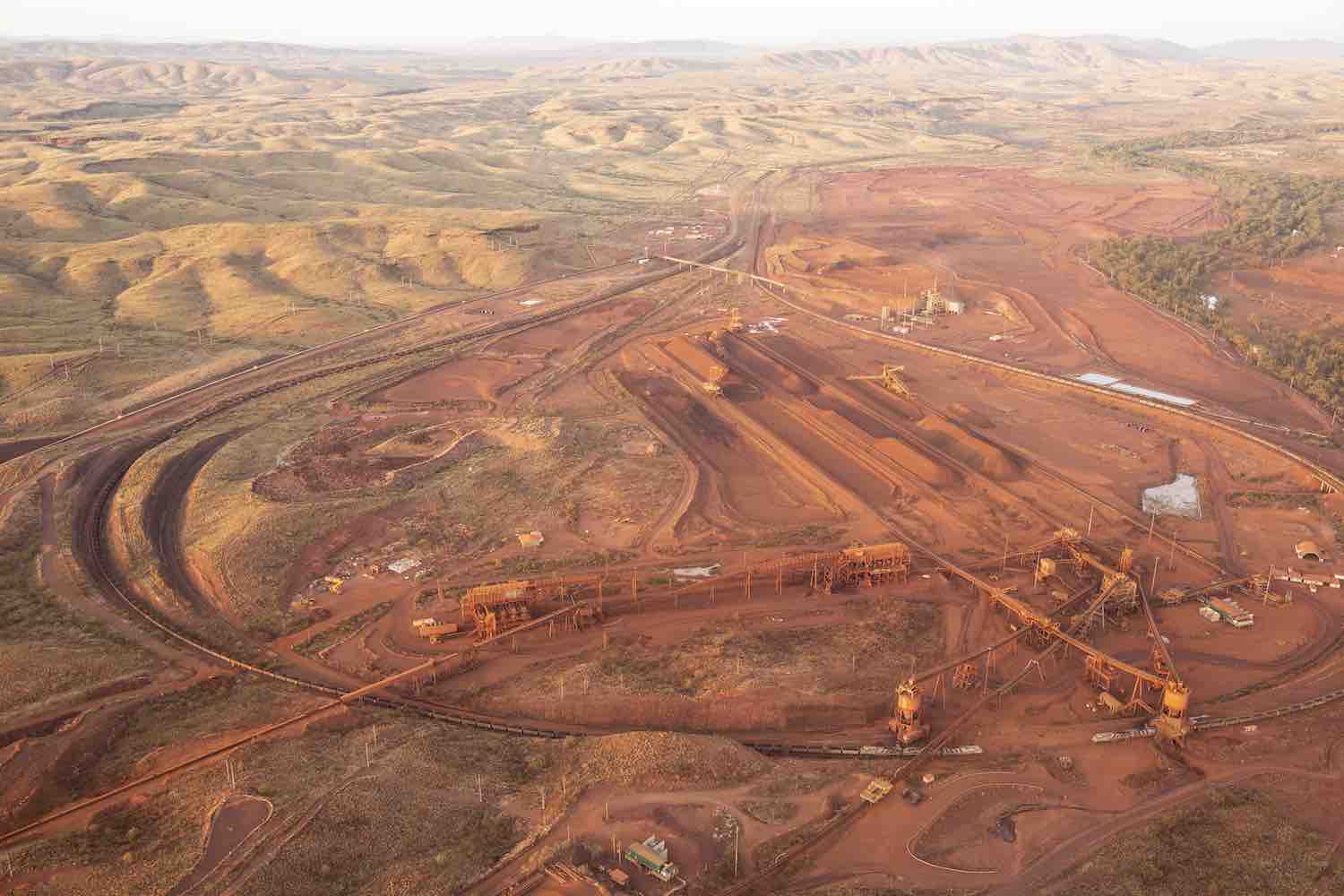
Despite its remote and rugged location, the Pilbara rail network remains a central driver of Australia’s economy. Located in the red deserts of Western Australia, the 3,800 km-long network delivers more than 800 million tonnes of iron ore to ports on the WA coast annually.
This equated to $150bn in export revenue during 2021.
To put that in perspective, Australia’s total exports in the same year were just $340bn. The Pilbara region is a glittering gift to Australia’s prosperity, hosting vast, high-quality iron ore reserves while being relatively close to major export destinations like China.
The region is also the second-largest supplier of bauxite (used in aluminium production) and the third-largest producer of gold worldwide.
In addition to Iron Ore revenue, gold and bauxite mining in WA combine to add around A$23bn in value to the Australian economy. While the progress is undoubtedly pleasing in the Pilbara, the world is searching for decarbonised industries and automated systems, both of which spell change for the regions profit-driving rail network.
Australia’s largest miners each have a presence in the Pilbara and deliver their product – from pit to port – via largely independent rail networks.
BHP, Rio Tinto, Fortescue Metals and Roy Hill all operate branded rail lines in the region.
And while profit margins remain stable, the industry broadly needs to shift away from fossil fuels while leveraging the improved efficiency offered by automated systems.
British-owned giant Rio Tinto operates the longest single network in the Pilbara, stretching over an impressive 1,800 km.
Rio has also implemented its “AutoHaul” project, meaning that each of its 220 locomotives – along the entirety of its network – is now operated remotely from Perth.
After a successful pilot program in 2018, Rio has become the first big miner to go with a fully-autonomous rail network.
As the darling of clean energy commitment, Fortescue Metals Group has established its own subsidiary, Fortescue Future Industries, to develop and implement clean energy and green hydrogen technology across its mining operations.
The developments also extend to Fortescue’s rail network.
Group chairman Andrew Forrest last year announced something called the “Infinity Train”, which uses energy – captured from friction between the train and its tracks – to provide driving power.
Fortescue hopes to remove diesel from its locomotives in the near term.
*Note: BHP and Roy Hill are also implementing rail automation programs.
The going is good up and down the Pilbara’s rail networks, and with 70bn tonnes of iron ore remaining in the ground, their future is solid.
However, the outlook for Iron Ore exports – on the whole – is a bit more gloomy. Increased competition and a strong global focus on greenhouse gas emissions mean the sector will face some headwinds.
These headwinds will also turn into lower product prices.
However, the big miners have seen the writing on the wall and are doing their best (and spending vast amounts) to bring their old-school rail networks into the future through clean energy power systems and automation.
All of this will help to ensure the longevity of the Pilbara rail networks and Australia’s vital profit-driving engines.
The Pilbara’s rail networks remain central to the region’s and Australia’s economic strength.
Spanning almost 4000kms and owned by global mining giants BHP, Rio Tinto, Fortescue Metals and Roy Hill, 800 million tonnes of Iron ore grace their tracks annually.
But change is inevitable, and as the Pilbara’s largest operators get set for a reduction in the price of Fe, their rail networks are in for an overhaul.
This can be seen in new engine and fuel technologies (aiming to eliminate diesel) alongside automation systems that are literally taking drivers out of their seats.
Dust suppression is a central issue in the world of mining and resources.
Learn more about GRT’s industry-leading and IoT-connected SMART Dosing Units, and discover how we’re driving better dust suppression solutions for all!
Your feedback is important to us.
If you enjoyed reading this Global Road Technology industry update and found it informative, please let us know by leaving a REVIEW.
References:
https://minerals.org.au/wp-content/uploads/2023/01/Best-in-Class-Australian-Iron-Ore-2021.pdf
https://mine.nridigital.com/mine_australia_apr23/western_australia_pilbara_railway
https://www.argusmedia.com/en/news/2409685-west-australian-iron-ore-exports-end-2022-on-a-high#:~:text=Port%20Hedland%20shipped%20559.7mn,3.1pc%20on%20December%202021.
Are environmental regulations, health and safety concerns or potential profit loss a concern right now?
Contact Us Now